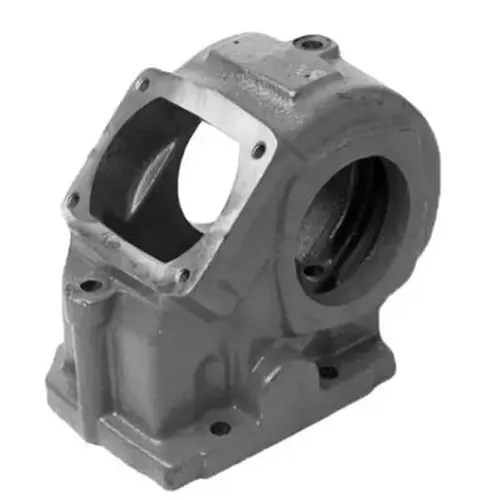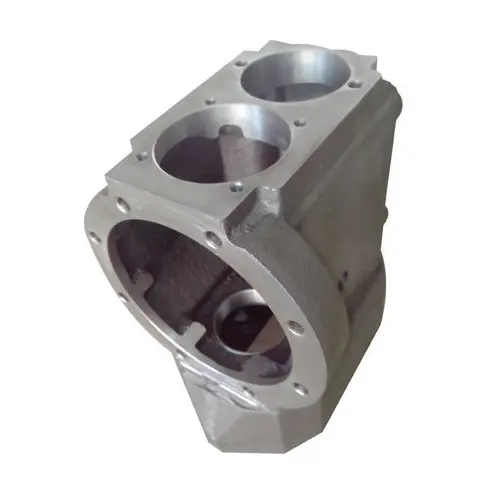Application of sulfur and oxygen in ductile iron castings
Sulfur and oxygen are harmful elements to ductile iron. Sulfur, in particular, is a strong anti-spheroidizing element. Only when the content in the original iron liquid is reduced to below 0.02% can the graphite be well spheroidized. When the in-mold spheroidizing process is adopted, the sulfur content should also be reduced to 0.01%. Therefore, reducing the sulfur content in the original iron liquid is a prerequisite for spheroidizing treatment. When producing ductile iron parts, the charge must be strictly controlled to ensure that the sulfur content in the iron liquid is low. If necessary, desulfurization operations should be carried out outside the furnace.
When magnesium is added to the original iron liquid of ductile iron for spheroidizing treatment, magnesium reacts with sulfur and oxygen in the iron liquid to generate MgS and MgO. Some data say that after adding magnesium, the sulfur content in the iron liquid can be reduced by 80-90%, and the oxygen content can be reduced by 40-50%. It can be seen that the high sulfur and oxygen content in the iron liquid will cause a large loss of magnesium in the spheroidizing agent, making the spheroidizing effect difficult to control and causing a large amount of slag. Therefore, when producing ductile iron parts, sulfur and oxygen are avoided as much as possible.
The role of oxides, sulfides and sulfur-oxygen complexes in ductile iron
According to the results of some research work, oxides, sulfides and sulfur-oxygen complexes can also serve as foreign crystal nuclei of spheroidal graphite in ductile iron. If used properly, the use of sulfur- and oxygen-containing inoculants in ductile iron can improve the performance of ductile iron in many aspects, such as:
· The size of graphite nodules is reduced, the number is increased, and the spheroidization rate is improved;
· The white cast tendency of cast iron is reduced, which is conducive to the manufacture of thin-walled ductile iron parts;
· When producing thick-walled castings, intergranular segregation can be reduced and the quality of castings can be improved;
· When producing thick-walled castings, graphite floating can be reduced or prevented;
· The amount of ferrite in the cast iron structure is increased;
· The shrinkage of ductile iron castings during solidification is reduced, and the tendency of castings to produce shrinkage and shrinkage holes is small.
The oxides, sulfides and sulfur-oxygen complexes that can serve as foreign crystal nuclei of graphite in gray cast iron are very different in ductile iron. Magnesium, which is highly chemically active, can reduce most of them to form MgS and MgO that enter the slag, and therefore, it is not enough to provide effective nucleation conditions for the formation of spheroidal graphite.
Therefore, for ductile iron castings, oxides, sulfides and sulfur-oxygen complexes that can serve as foreign crystal nuclei of spheroidal graphite should be more thermodynamically stable than magnesium oxides and sulfides.
At the temperature of molten iron, among the alloying elements commonly used to treat cast iron, cerium and calcium have a greater affinity with sulfur and oxygen than magnesium. Therefore, combining cerium and calcium with sulfur and oxygen is a desirable solution.
Cerium can combine with sulfur and oxygen to form compounds such as CeS, Ce2O3, Ce2O2S, etc. These compounds are stable at around 1500℃, with a size of about 1-3μm and a density of about 6.5 g/cm3. They are basically spherical and can be dispersed in the molten iron as foreign nuclei of graphite. In addition, such compounds have been found in the core of spherical graphite in research work. After that, the cerium and calcium in the inoculant can remove sulfur and oxygen in the molten iron to a very low level, almost doubling the surface tension. Therefore, the amount of magnesium added during spheroidization can be reduced, and the residual magnesium content can still maintain normal spheroidization when it is below 0.03%.
After pretreatment and magnesium addition, the molten iron still has a certain oxygen content. Inoculation treatment is necessary to ensure a large number of graphite balls and good roundness. Under this condition, the inoculant can use 75 ferrosilicon.
2. Used for instantaneous inoculation
If the molten iron after spheroidization and inoculation is kept for a long time, its nucleation ability will be greatly weakened, resulting in various quality problems in castings. If a new type of inoculant is used for instantaneous inoculation during the pouring process, it will have a strong nucleation effect. Moreover, test results show that the use of this inoculant can make the graphite balls have both large and small sizes, with a bimodal distribution, which helps to reduce shrinkage defects.








